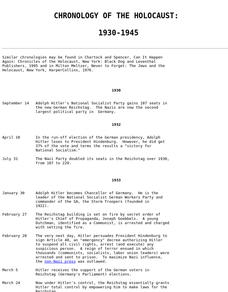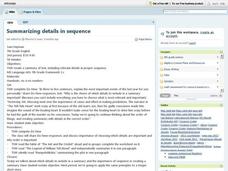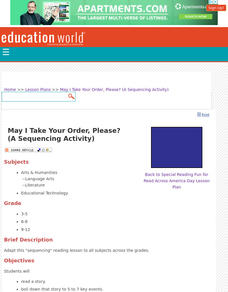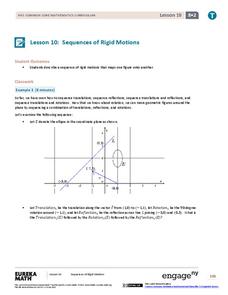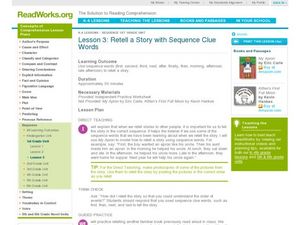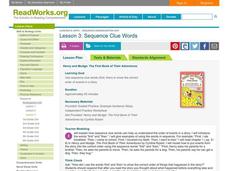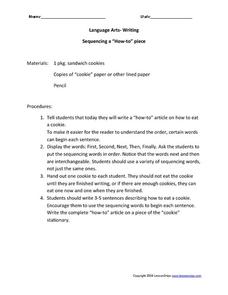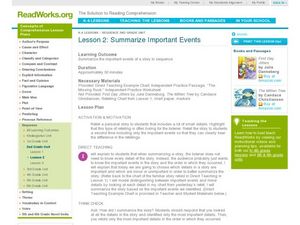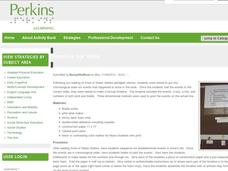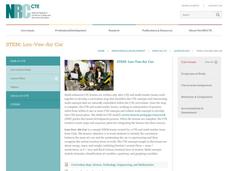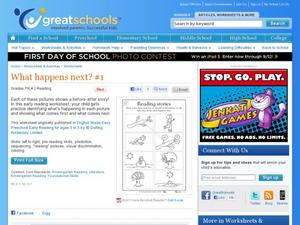Curated OER
Sequence, Predict, Infer: Pink and Say
Practice sequencing with your 2nd graders via Patricia Polacco's Civil War book Pink and Say. Begin with a blindfold and a bag of mystery items. Connect their use of clues to identify what they can't see with the skill of making...
Smithsonian Institution
A Ticket to Philly—In 1769: Thinking about Cities, Then and Now
While cities had only a small fraction of the population in colonial America, they played a significant role in pre-revolutionary years, and this was certainly true for the largest city in the North American colonies: Philadelphia. Your...
Curated OER
A Chronology of the Holocaust
A straightforward chronology of the Holocaust lists events from 1930 to 1945. Connects to a page with links to extensive resources and information about the Holocaust. Use as a resource for student inquiry into the Holocaust.
Curated OER
Summarizing Details in Sequence
Seventh graders write a few sentences explaining the most important events of their lives during the past year. As a class, they discuss why they chose the elements they did for their sentences. To end the lesson, they read a variety of...
Curated OER
Listening Comprehension: Retell Main Events of a Story
Story retell is a very important skill. Little learners use a story map and a previously heard story to walk through the retell and story sequencing process. They complete this activity as a whole class and then on their own.
Curated OER
May I Take Your Order, Please?
Pupils read a story, boil down that story to 5 to 7 key events, create a sequencing quiz to go with the story and have their classmates take the quiz. They will the strategy of sequencing by reading various stories (that they are not...
Curated OER
Lesson Plan 17: Novel, Take 2
It's all about using peer resources in this writing process lesson, which includes a fantastic novel revision worksheet packet. Learners have read a partner's story draft the night before, and groups have a "lightning round of praise"...
Model Me Kids
Model Me Going Places 2
Social stories are wonderful teaching tools specifically designed for learners with Asperger's, autism, PDD-NOS, non-verbal learning disabilities, or other developmental disabilities. They are used to model appropriate social behaviors...
Curated OER
Parts of the Plot: Constructing A Plot Diagram
After reading "The King of Mazy May" by Jack London, learners reinforce their literary analysis skills in this SMART board activity. The provided SMART board file allows themto define elements of a short story, and then add it to the...
EngageNY
Sequences of Rigid Motions
Examine the various rigid transformations and recognize sequences of these transformations. The lesson asks learners to perform sequences of rotations, reflections, and translations. Individuals also describe a sequence that results in...
Curated OER
Take the Mystery Out of Building Suspense in a Narrative
Good thing, bad thing; a fun technique for building suspense in a narrative.
Wise Owl Factory
Henry and Mudge
Henry and Mudge are best friends in Cynthia Rylant's book series featuring the adventures of a boy and his dog. Use this activity packet to accompany Henry and Mudge: The First Book and Henry and Mudge Take the Big Test. Learners...
Curated OER
Sequencing / Story Events
Students read a story and use sentence strips to order story events. In this sequencing lesson, students learn new vocabulary words centered around the story Cloudy With a Chance of Meatballs, preview the story, make predictions about...
Curated OER
Lesson 3: Retell a Story with Sequence Clue Words
First graders evaluate sequence words. In this order of events lesson, 1st graders practice using sequence words to retell a story. They do guided practice with the teacher retelling a story they have read as a class and then try it...
Curated OER
Sequence Clue Words
Young learners use sequence words to describe pictures they draw of events happening in a story. To practice sequencing events, they use words such as first, then, next, and more.
Curated OER
Sequencing a "How-to" Piece
In his sequencing worksheet, students write a "how to" article telling how to eat a cookie. For this essay worksheet, students write 3-5 sentences.
Curated OER
Summarize Important Events
Second graders discover how to properly summarize important events. In this summarizing lesson plan, 2nd graders listen to a retelling with a lot of minor details and discuss how it could be improved. Students read a story and determine...
Perkins School for the Blind
Timeline for Anne
It is key to the learning process to make everything a child with visual impairments does as tactile as possible. After reading Anne of Green Gables, the class discusses her life events in order to make a tactile time line. They choose...
National Research Center for Career and Technical Education
STEM: Lou-Vee Air Car
A comprehensive lesson plan on acceleration awaits your physicists and engineers! Two YouTube videos pique their interest, then sample F=ma problems are worked and graphed. The highlight of the lesson plan is the building of a Lou-Vee...
Curated OER
Chain of Events
In this sequence of events worksheet, learners use the chain link graphic organizer to write the sequence of events in order. Students write the topic or draw a picture of it in the center space.
Curated OER
What Happens Next? 1
Knowing how to sequence events means you have to know what happens before and after. Little ones draw a line from four before images to the images that show what happened next. This is a good challenge for your youngest learners.
Curated OER
Body Sequencing
Fifth graders listen to a story told by their teacher. They have cards of all of the events in the story. They must "jump" into the correct order of events.
Curated OER
Chronological Sequence
In this sequencing events activity, students choose topics and fill in blanks of two Flow Chart templates to put facts in chronological order. Students complete two flow charts.
Curated OER
Winterdance
In this chronological order instructional activity, students put story events in order that they are given. Students put 7 events in chronological order.




